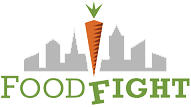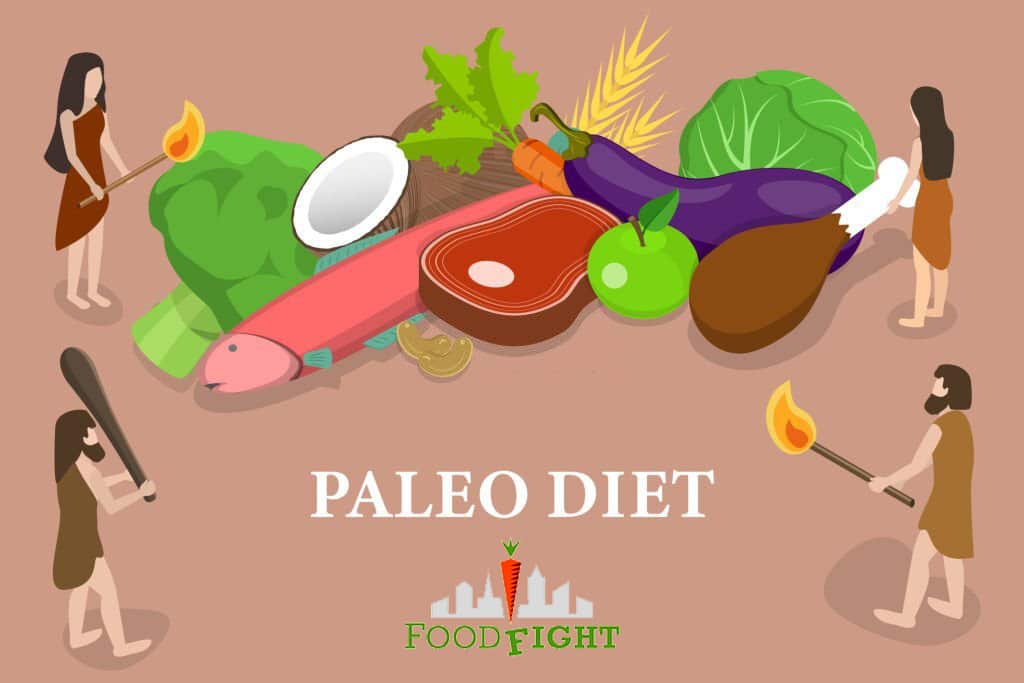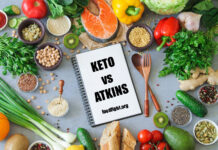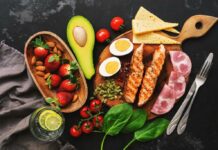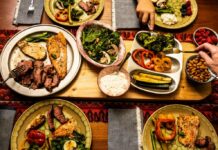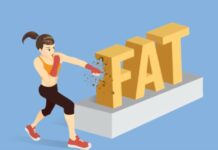In Paleo diet theory, our bodies were genetically programmed to function best if they ate like our caveman ancestors. Known by other names including Caveman Diet, Stone Age Diet, Paleolithic Diet, Primal Diet, Hunter-Gatherer Diet, and Hunter-Gatherer Diet, the Paleo diet is a low-carb, modern diet.
It sounds preposterous on the surface. There have been thousands of years since humans have lived in caves. However, the important thing to remember is that a few thousand years may seem like an eternity to a human being. But, from a genetic perspective, the caveman days are just a flashback.
For thousands of years (or yesterday, genetically speaking), humans had to hunt meat and gather vegetables and fruits for survival. Following the agricultural revolution, humans moved from hunters and gatherers to farmers.
Since then, instead of eating meat, vegetables and seasonal fruit, we eat carbs (corn, rice, bread, potatoes, etc.). We eat a diet that makes us fat and sick, not one that our bodies were designed to use.
According to the CDO (Center for Disease Control and Prevention), more than one-third of U.S. adults are obese, and obesity-related conditions (heart disease, stroke, type 2 diabetes, and certain cancers) are some of the leading causes of preventable death.
If you are more scientifically inclined, here is a 72-minute video by Dr. Loren Cordain, Colorado State University professor and author of “The Paleo Diet”, explaining the Caveman diet in more detail.
A Caveman diet proponent states that people on a standard American diet are more prone to digestive illnesses like Crohn's disease and Ulcerative Colitis, as well as easily gaining weight.
In fact, there are numerous accounts of people with digestive illnesses like Crohn's disease or Ulcerative Colitis who improved dramatically when switching to the Paleo diet.
How Much Weight Can I Lose on the Paleo Diet?
In accordance with Dr. Loren Cordain's best-selling book, “The Paleo Diet,” the Paleo diet will help you lose 75 pounds in 6 months (an average of 12.5 pounds per month) and achieve optimal health. There is no need to count calories, which is great.
For optimal weight loss, there are some quantity limits on a small number of food items (nuts/seeds, alcohol, oils, diet sodas, coffee/tea, and dried fruits), but otherwise, you can eat what you want, as much as you want, as long as you eat only certain foods.
Here is a short video (3 minutes) of celebrities who succeeded with the Caveman diet or diets similar to the Caveman diet.
Why is the Paleo Diet So Hard?
Some genetic rules that made sense for cavemen and did not cause any problems for them can really mess up a person's diet in today's society.
In the book “Mean Genes: From Sex To Money To Food: Taming Our Primal Instincts”, authors Dr. Terry Burnham and Dr. Jay Phelan make the case that we developed our survival-minded genes in a time of scarcity, and today those genes cause all kinds of problems in a modern society of affluence.
For example, for a caveman, it was necessary to have the genetic imperative that said “load up on sweets like there is no tomorrow” since sweets in those times were rare and most of the time not available. That same genetic imperative in today's 24/7 society of instantly available sweets causes real problems.
It is helpful to keep this in mind as you begin the Paleo diet. Especially in the beginning, it may be incredibly challenging for you to give up carbs, the sweets and dairy (see below for information on what you can and cannot eat).
It should get easier over time, but there may be moments when your genetic imperative takes over, and you will want to “load up on sweets.”
The Paleo Diet Food List
The nice thing about being on the Palo diet plan is that you won't be hungry. You may be dissatisfied because you can't eat your favorite foods (Pizza, ice cream, hamburgers, etc.), but you won't be hungry.
If you do some research, there are several “versions” of the Paleo diet food list. The below lists are compiled based on Dr. Cordain's book “The Paleo Diet.”
For example, fatty meats, bacon and sausages are prohibited according to the book, but you will see many online “Paleo” recipes that include bacon and sausages.
It's probably easier not to sweat the details and use common sense and your best judgment. It is far more critical in this diet to eliminate sweets, grains and dairy than to eat the right type of meat.
Foods Allowed On The Paleo Diet Plan
Here is what you can eat on the Paleo diet plan:
Meat & Seafood – All you can eat
For meats, grass-fed meats are ideal. According to “The Paleo Diet” book, salt-added meats and fatty meats must be avoided, including bacon, deli meats, hot dogs, and sausages.
Tip: Don't spend too much time figuring out which meats are allowed or not. Just use your common sense and prudent judgment.
Low-Glycemic Fruits (For Weight Loss) and Non-Starchy Vegetables – All you can eat
Examples of non-starchy vegetables:
- Asparagus
- Bell peppers
- Broccoli
- Brussels sprouts
- Cabbage
- Carrots
- Cauliflower
- Celery
- Collards
- Cucumber
- Eggplant
- Endive
- Green onions
- Kale
- Lettuce
- Mushrooms
- Mustard greens
- Onions
- Parsley
- Radish
- Seaweed
- Spinach
- Swiss chard
Eggs
6 to 12 a week.
Nuts and Seeds Except for Peanuts
No more than 4 ounces of nuts and seeds a day for weight loss.
Alcohol
Better if you avoid it, but you can still have your occasional glass of beer or wine.
Oils
A Paleo Diet plan allows you to consume oils in moderation, but cannot exceed 4 tablespoons of oil per day, based on the recommended amount.
Diet Sodas/Coffee/Tea
In moderation, diet sodas, coffees, and teas can be consumed as part of the Paleo diet.
Dried fruits
A small amount of dried fruits can be consumed daily, less than two ounces.
But How Can I Lose Weight, If I Can Eat All I Want?
A diet limited to the foods mentioned above will make it difficult for you to overeat in the long run. It is natural that your appetite will decrease, while at the same time, your metabolism will increase.
In most cases, the foods we crave and can eat in excess are starches, fats, and sugars combined. You can always have some extra ice cream or cake after dinner, but probably not as much raw carrots or meat.
You will naturally eat less (without being hungry, as can be the case on many diets) and your metabolism will improve, burning more calories (since you now eat foods your body was designed for), if you limit yourself to food items that are really hard to overeat.
Paleo Snacks
Some people do better with snacks; of course, you can snack on the Caveman diet. Yes, the Paleo snacks are portable but different from what you have been eating. No more sugar (candy) and high-carbs (potato chips), but real and healthy food.
The snacks on the Paleo diet are healthy and made of real food. You can eat the following snacks whenever you get hungry:
- Fresh fruits of any kind
- Protein (homemade beef jerky, cold slices of meat, shrimps, boiled eggs)
- Raw vegetables like carrots, celery sticks, and cherry tomatoes (with homemade dips like guacamole or salsa)
- Nuts, but limit to 4 ounces a day for weight loss
These are simple things to make. The key is preparation. Here, for example, is a short (3 min) video from the Food Network on how to make the perfect Guacamole Dip.
Forbidden Foods on The Paleo Diet
One helpful way to figure out if the food is forbidden is to imagine the foods the cavemen/women had access to.
Basically, you can't eat anything that wasn't readily available 300 generations ago by people living in caves.
No Sweets
Technically, the only source of sugar allowed in the Caveman diet is fresh WHOLE fruits. In the book “The Paleo Diet”, Dr. Cordain prohibits even freshly squeezed fruit juices since they lack fiber and have a higher glycemic index.
So ALL OTHER TYPES of sugar, including the below types of sugar, are forbidden.
- Table sugar
- Lactose (dairy products)
- Honey (yes, Dr. Cordain explicitly lists honey as not allowed)
- Maple syrup
- Corn syrup
- High fructose corn syrup
- Dextrose
- Dextrin
Tip: If you ever have a sweet tooth and must eat something sweet, we recommend using a safe, natural herbal sugar substitute that has been used for hundreds of years, called Stevia.
No Grains
Any food made from wheat, rice, oats, cornmeal, barley or other cereal grain is a grain product.
Bread, pasta, oatmeal, breakfast cereals, tortillas, and grits are examples of grain products. That includes corn and corn products.
The average caveman may have come across the occasional wild grain, but that would have been rare and probably not very popular.
Nibbling on raw wheat kernels is not that tasty. Bread is tasty, but that is a wheat product that cavemen did not have access to.
No Cereal-Grain Like Seeds
These include amaranth, buckwheat, and quinoa.
No Starchy Vegetables
This means no potatoes, no sweet potatoes, and no yams.
No Legumes (Peanuts, Peas, Beans)
Peanuts, peas and beans are forbidden on the Paleo diet plan.
Peanuts are legumes, not nuts, and therefore forbidden in any form (including peanut butter).
No Dairy Products
The caveman/woman did not have access to dairy products (butter, milk, yogurt, ice cream); therefore, these are also forbidden in the Caveman diet plan. Note that some versions of the Caveman diet allow butter and cream.
Tip: Try almond milk instead of regular milk. It tastes great and has fewer calories.
No Salt-Containing Foods
According to Dr. Cordain, any food that has added salt is forbidden.
- Premade salad dressings and condiments
- Processed meats
- Ketchup
- Salami
- Smoked fish and meat
- Sausages
No Fatty Meats
Fatty meats are also prohibited according to the book, but here is where some other versions of the Paleo diet plan differ and allow these types of meats. According to the book, fatty meats include:
- Chicken wings
- Fatty pork chops
- Bacon
- Breakfast sausages
Tip: Don't stress yourself out figuring out which meats are allowed or not. Using common sense and wise judgment is the right approach.
No Processed Foods
Processed foods include the typical prepackaged frozen meals, potato chips and cookies, and processed meats including hot dogs, bacon, bologna and salami.
Tip: Check the ingredients of any packaged foods you buy and try to avoid ones with lots of ingredients in them.
Paleo Diet Food List
For a quick and easy reference, the following Paleo Diet Food List shows all the food items that you should and should not eat on the Caveman diet.
Caveman Diet Criticism
One drawback of the diet is that if you don't stick to it, you will gain back the weight lost. Another problem is that the diet doesn't provide adequate amounts of vitamins and minerals.
While this is true, the drawbacks are similar to any other diet. Therefore, we will provide other logical reasons that would lead us to believe this Paleo diet provides a healthy eating habit.
Paleo Diet Food Expense
You have to spend more money on meat, fresh fruits, and fresh vegetables when following the Caveman diet plan.
While eating healthy is more expensive than a fast food diet, you are investing in your health when you buy organic foods. By getting healthy, you will avoid doctor visits, prescription drugs, and even surgeries, so buying nutritious foods is actually a lot less expensive in the long run.
In addition, the initial cost increase is partly due to the learning curve, but there are ways to keep incremental costs to a minimum.
For example, farmers markets often sell locally grown fruits and vegetables at relatively low prices. Also, check out any ethnic supermarkets (Mexican, Korean, etc.) in your area. These are often very cheap compared to regular supermarkets.
It is likely that your food costs will go up. Nevertheless, when you consider the savings you will make in the long run (no hefty medical expenses) and the amazing benefits you will gain from it, such as a healthier quality of life and a longer lifespan, it is an excellent investment.
We are talking about our body. You can't expect great results if you feed it junk food. A healthy future depends on buying and eating high-quality food.
The Caveman Diet is So Inconvenient in Today's Society
This part is difficult since there is no Paleo fast food chain! All of today's fast food chains focus on carbs (cheap) and frozen foods (no financial loss due to perishable food items) and avoid fresh vegetables & fruits (too expensive and they spoil quickly).
You will need to prepare, cook, and have a constant supply of Paleo foods in your fridge and freezer. If you wait until you are hungry, it is often too late to stick to the Paleo diet. The old motto applies: “If you fail to plan, you plan to fail”.
But with a bit of preparation, you can have Paleo diet food available whenever you are hungry in your refrigerator or freezer. You can even bring snacks (carrot sticks, almond nuts, for example) on the road or to work.
Here is a free, highly rated Apple app that works on your iPhone and your iPad and helps you find Paleo diet options near you.
It is called “HealthyOut”. You just tell the app that you are on the Paleo diet, and it shows you the dishes available for take-out or, if you are going to a restaurant, for a sit-in in your area. It couldn't be easier.
Multiple Paleo apps can help you with your Caveman diet. Seek them out to make your Caveman diet life easier
3 Stages You Can Take to Implement the Paleo Diet Plan
Although many people report that in addition to the weight loss, they feel much better on the Caveman diet, the adjustment period can be challenging.
In order to make the transition to the Paleo diet easier, Dr. Cordain has developed three stages.
Stage 1 – The Entry Level to the Paleo Diet
We eat, on average, 21 meals a week, plus snacks. During the entry-level phase of the Paleo diet plan, you can eat whatever you like for 3 of the 21 meals.
That could all be on one day (breakfast, lunch & dinner) or spread out throughout the week, but you should try to limit yourself to one Open Meal on any given day.
For the 3 “open” meals, you can taste and eat some of the foods you miss the most. This helps your body adjust to more healthy foods and also helps you transition mentally onto the Paleo diet.
The recommended time frame for this stage is two to four weeks, but you can stay on this level as long as you want.
Stage 2 – Maintenance Level
Here the “open” meals are reduced from 3 meals per week to 2 meals per week.
Stage 3 – Maximum Weight Loss Level
You only have 1 “open” meal per week at this stage. This is the highest level for people who want to maximize weight loss and health benefits and dieters with chronic diseases.
How to be Successful with the Paleo Diet: Top 5 Tips
Below are five tips that may work for you to make your Caveman diet lifestyle easier.
1. Spend time and find a few Paleo dishes you enjoy eating
Start with your favorite non-Paleo dish, and see if you can't create a Paleo version of your favorite dish.
For example, mashed cauliflower can be a close substitute if you enjoy mashed potatoes. Or, if you like Pizza and can't live without it, there are Paleo pizza recipes on the internet.
Simply put, the Paleo diet will not stick if you don't like what you eat, making staying slim, fit, and healthy more difficult.
2. Prepare, prepare, and prepare
Spend a few hours each week to pre-cook your food and put it in the fridge and freezer. It cuts down on your cooking time during the week, and you always have Paleo food available.
Or if you cook dinner, prepare twice as much.
That way, you have already made your lunch or dinner for the next day. One of the main reasons people violate the Paleo diet is because they wait until they are starving and hungry. They have no patience to cook a Paleo diet meal.
An old quote applies here again: “If you fail to plan, you plan to fail”.
3. If you have a craving for non-Paleo food, wait for the next planned open meal
Take comfort in the fact that you can still eat what you want but that you choose to do it at a pre-planned time.
Self-control is a muscle that gets stronger the more often you successfully apply it.
However, if you really need your “fix” (and that happens to the strongest person) urgently, have it but keep it limited (don't binge).
4. Don't keep non-Paleo food in the house
We often tend to reach for what is convenient. We also have the tendency not to want to waste things.
To avoid eating bad foods for those reasons, make sure to remove the temptation.
5. Learn how to use spices
You will be surprised by the taste and flavor variety you can experience with different spices.
This may be one of the most valuable learning experiences you have on the Caveman diet, with spices enriching your culinary life and being good for your health.
Conclusion
In conclusion, Paleo is a diet based on the idea that our ancestors ate foods similar to what we'd call modern day hunter gatherers. This means that Paleo diets focus on meat, vegetables, fruits, nuts, seeds, and eggs. They also avoid grains like wheat, rice, corn, and oats.
While it sounds simple, the truth is that Paleo diets aren't easy to follow. That's because these types of diets tend to eliminate processed food items from your diet entirely.
So if you want to really commit to following a Paleo diet, you'll need to cut out lots of stuff that you love. But if you're determined to live healthier, it's definitely worth giving Paleo a shot!
